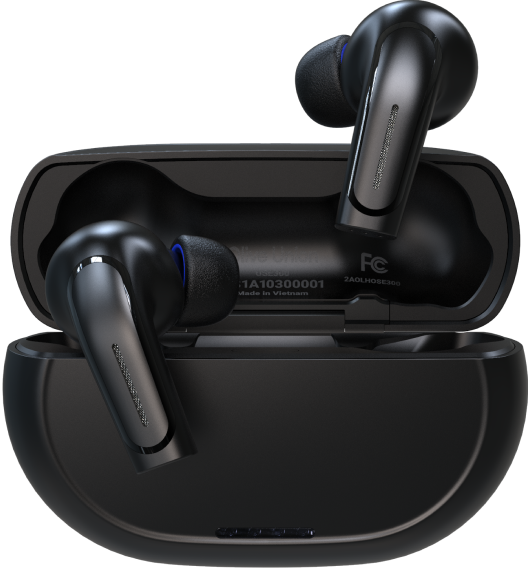
The days of manually replacing the batteries of your hearing aid are finally over! Utilizing new and improved technology, rechargeable hearing amplifiers are set to become the new standard.
What Are Rechargeable Hearing Amplifiers?
Rechargeable hearing amplifiers contain batteries that are built-in and do not require regular replacement. Normally, once an amplifiers battery has died you have to replace them manually with fresh ones. With rechargeable hearing amplifiers that is no longer the case! To charge the batteries, you simply dock the hearing amplifiers on their charging unit, like you would a phone or cordless drill.
How Long Can You Expect Your Rechargeable Battery To Last?
Previously, older rechargeable battery technology was not commercially feasible due to poor energy efficiency and bulky design. Nowadays rechargeable hearing amplifiers use either built-in lithium-ion batteries or removable silver zinc batteries. Most of these batteries will hold a charge for approximately 24 hours (some can hold a charge for up to 30 hours). The batteries require daily charging, which is easy to do by placing them on the charging unit overnight while you sleep. Silver zinc batteries are also removeable and offer the added option to be swapped out for disposable batteries should the need arise.
Newer rechargeable battery technology means that the batteries have long shelf lives: current generations of lithium ion batteries should last approximately five years before needing to be replaced. For built-in lithium batteries, manufacturers may charge an out-of-warranty repair cost to replace rechargeable batteries in your hearing amplifier; around $250-350 per device. Despite this replacement cost, rechargeable hearing amplifiers may be a more attractive option that units with traditional batteries which need to be replaced every few days to weeks.
What Are the Pros of Rechargeable Batteries in Hearing Amplifiers?
Rechargeable hearing amplifiers can be much more convenient, especially for older users that may have vision or dexterity issues which make replacing batteries regularly a difficult task. Disposable batteries for hearing amplifiers are very small and the packaging is often difficult to open. Rechargeable batteries also remove the need to purchase new batteries regularly or remember where you’ve put them.
Because the disposable button batteries that hearing amplifiers use are so small, they become a very dangerous hazard if accidentally swallowed by grandkids or your pets. Rechargeable hearing aids eliminate the chance of this dangerous accident.
Lithium ion technology now allows for very fast charging. For instance, if you forgot to charge your rechargeable hearing amplifier overnight, docking the unit on its charger for 30 minutes will yield approximately seven hours of use. The speed of charging is likely to increase as lithium ion technology continues to improve. Additionally, because lithium ion batteries don’t have the memory effects that older rechargeable batteries had, you can charge your hearing amplifiers at any time, even if they’re not fully discharged, with no ill effect on the rechargeable battery.
Another advantage of rechargeable hearing amplifiers that utilize silver zinc rechargeable batteries is that in an emergency, standard disposable batteries can be used in the unit. This is ideal for people that may be unable to get to their charging unit, forgot to bring it with them, or are in an area with no electricity, such as when camping. Silver zinc batteries are also non-flammable, non-toxic, and recyclable.
Rechargeable batteries are cost effective: a single disposable button battery costs approximately one dollar; a typical person wearing two hearing amplifiers (one in each ear) and changing both batteries once a week, would spend more than $300 over a three year timespan. When you purchase a rechargeable hearing amplifier, the initial cost includes the charging unit and the first set of batteries, which should last approximately five years. In addition, rechargeable hearing amplifiers are not only cost-effect, they are also environmentally friendly: over that same three year timespan, those 300 batteries will be thrown away. Comparatively, only two rechargeable batteries would be used during that time!
Let’s Talk About the Cons of Rechargeable Hearing Amplifiers
One of the cons is that you will be recharging your devices often - usually once a day. Because of this, you need to either carry a charging unit with you, or make sure you have access to it at the end of every day. If you use your hearing amplifiers to stream audio from your smartphone via bluetooth, then the batteries may not last a full 24 hours. However, this is hardly a con, considering that the alternative - traditional batteries - require replacing almost daily as well.
Due to the relative infancy of the rechargeable hearing amplifier market, you may not be able to find a rechargeable hearing amplifier that has all of the features you require, such as models with high power levels or amplification. Additionally, they aren’t offered in all styles and sizes, such as smaller models that fit completely within the ear. As such, your options are a bit more limited as opposed to hearing amplifiers that use standard disposable batteries.
In the case of rechargeable hearing amplifiers that use built-in lithium ion batteries, the battery is not removable from the device. If the battery fails and needs to be replaced, then the user would be without their hearing amplifier while the replacement is made.
----------------------------------------------------------------------------------------------------------
Despite these negatives, rechargeable hearing amplifiers are quickly becoming the norm, and the market is quickly starting to reflect this. As technology continues to improve we can only anticipate more advances in battery efficiency and power. Now is the perfect time to hop onboard the rechargeable hearing amplifier train!
The information in this guide has been written using the following reliable sources:
https://www.poison.org/articles/button-batteries
https://www.hearingyourbest.com/the-pros-and-cons-of-rechargeable-hearing-aids/
https://www.audiologyonline.com/articles/hearing-aid-batteries-past-present-18305
https://www.aarp.org/health/conditions-treatments/info-2015/hearing-amplifiers-psaps.html
 (708) 847-3208
(708) 847-3208










